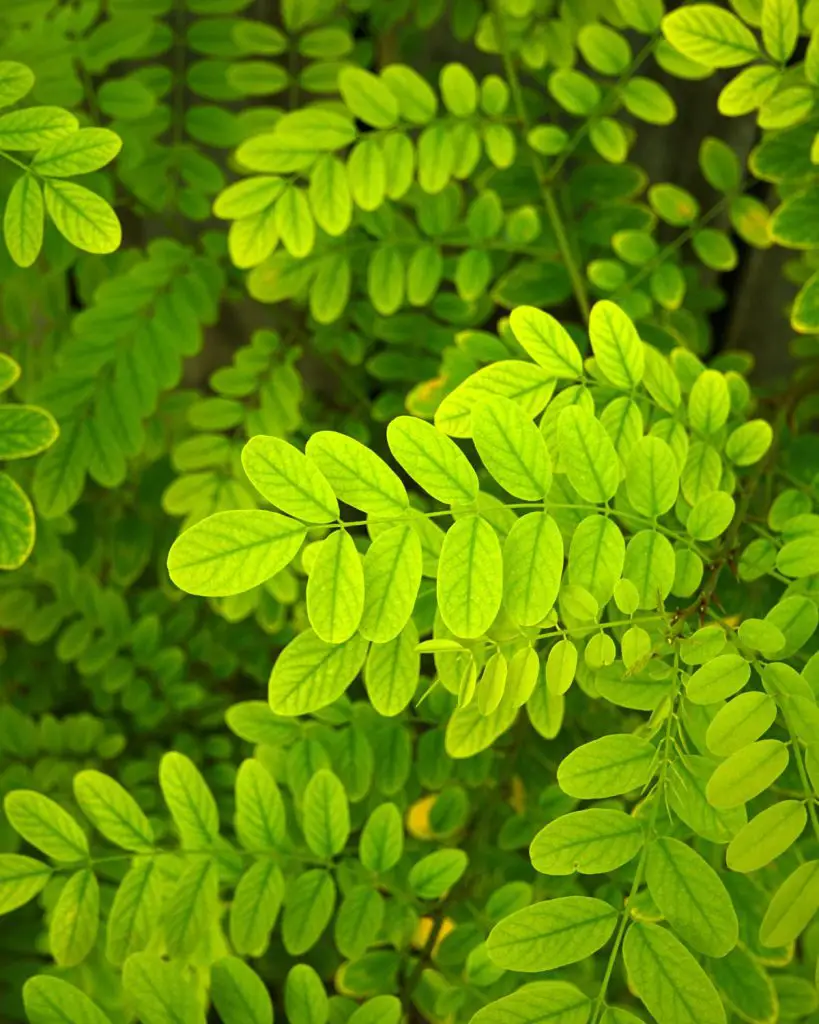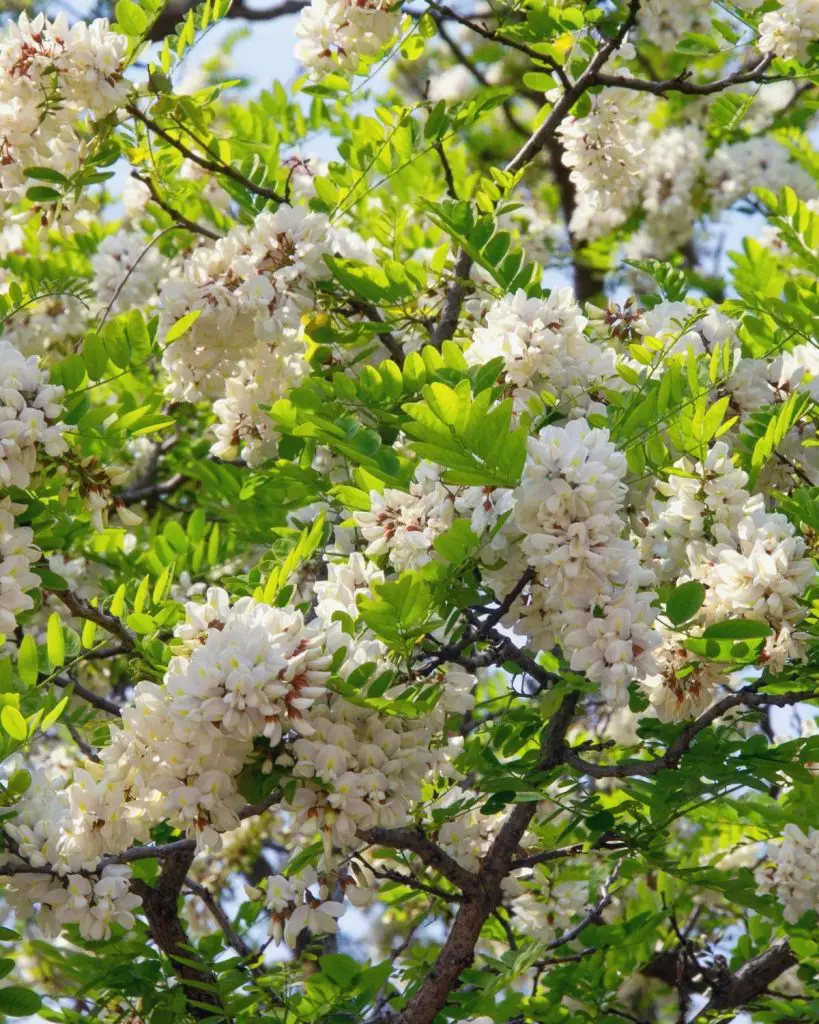Honey Locust vs Black Locust: A Comprehensive Comparison
When it comes to choosing the right tree for your yard, there are many factors to consider. Two popular options are the Honey Locust and Black Locust trees. Both trees have unique characteristics that make them stand out, but they also have differences that may make one a better fit for your specific needs.
Honey Locust trees are known for their delicate, fern-like leaves and attractive, long, flat seedpods. They are also more resistant to pests and diseases than Black Locust trees. On the other hand, Black Locust trees have shorter, curved seedpods and yellowish-green flowers. While they may not be as resistant to pests and diseases as Honey Locust trees, they are more adaptable to different types of soil.
Disclosure: As an Amazon affiliate, I earn from qualifying purchases at no extra cost to you. My blog contains other affiliate links as well for your convenience. To learn more, you may read my Disclosure Policy. Thank you for supporting my blog!
Identifying Honey Locust and Black Locust
When it comes to identifying Honey Locust and Black Locust, there are a few key features that can help you differentiate between the two. Here are some important things to look for:
Appearance and Size
Both Honey Locust and Black Locust are deciduous trees that can grow quite tall. However, there are some differences in their appearance and size. Honey Locust trees can grow up to 100 feet tall in the wild, but when cultivated for landscaping, they usually remain between 40-70 feet tall. Black Locust trees, on the other hand, typically grow between 60-80 feet tall and have a magnificent canopy that can reach up to 30 feet wide.
Leaves and Flowers
The leaves of Honey Locust trees are small and bright green, while the leaves of Black Locust trees are compound and have a bluish-green tint. Honey Locust flowers are usually cream-colored, while Black Locust flowers are yellowish-green with drooping branches. The flowers of Black Locust trees are also larger and more showy than those of Honey Locust trees.

Bark and Thorns
The bark of Honey Locust trees is usually shaggy with ridges, while the bark of Black Locust trees is grooved. Both types of trees have sharp thorns, but the thorns of Honey Locust trees are usually longer than those of Black Locust trees.
Seed Pods and Seeds
The seed pods of Honey Locust trees are longer than those of Black Locust trees, and they contain seeds that are surrounded by a sweet edible pulp. Black Locust seed pods are shorter and contain seeds that are not edible.
In summary, Honey Locust and Black Locust trees have several distinguishing features that can help you tell them apart. By paying attention to their appearance, leaves and flowers, bark and thorns, and seed pods and seeds, you can identify these trees with confidence.

Must Have Gardening guide
Gardening From Scratch
the Ultimate Guide to Raised Bed Gardening
Habitat and Distribution
Honey Locust
Honey locusts are native to the eastern United States, with their range extending from Pennsylvania to Florida and westward to Texas. They are commonly found in forests, woodlands, and along streams and rivers. Honey locusts prefer warm and moist climates, but they can also tolerate drought conditions. They can grow up to 100 feet tall and have a broad crown that provides ample shade.
Honey locusts are often planted as ornamental trees in urban areas due to their attractive foliage and tolerance for pollution. They are also used for erosion control and as a source of food for wildlife, as their seed pods are edible.
Black Locust
Black locusts are native to the eastern United States, with their range extending from Pennsylvania to Georgia and westward to Missouri and Arkansas. They are commonly found in forests, woodlands, and along streams and rivers. Black locusts prefer well-drained soils and can tolerate drought conditions. They can grow up to 80 feet tall and have a narrow crown.
Black locusts are also planted as ornamental trees in urban areas, but they are less common than honey locusts. They are also used for erosion control and as a source of wood for furniture and other products.
In Oregon and Washington, black locusts are considered invasive species and are actively managed to prevent their spread. They can outcompete native plants and disrupt ecosystems.
Both honey locusts and black locusts are widely distributed in North America, but their habitats and ranges differ slightly. While honey locusts are more common in warm and moist climates, black locusts prefer well-drained soils.

Growth and Adaptability
Honey Locust
Honey locusts are fast-growing trees that can grow up to 80 feet tall and 30 inches in diameter. When in their natural habitats, where the conditions are favorable, they can reach an impressive 150 feet and double the standard diameter. They are deciduous and can adapt to a range of environments, including poor soil, drought, and full sun.
Honey locusts are also known for their thin canopy, which allows sunlight to penetrate through and create a dappled shade. This makes them a great choice for planting in areas where you want some shade, but not complete darkness. They are also relatively low-maintenance trees that do not require a lot of pruning, making them a popular choice for landscaping.
Black Locust
Black locusts are also fast-growing trees that can reach up to 80 feet tall and have a magnificent canopy, often reaching 30 feet wide. They are deciduous and can adapt to a range of environments, including poor soil, drought, and full sun. However, they are not as tolerant of shade as honey locusts and prefer full sun.
Black locusts are also known for their thorns, which can be a problem if you have children or pets. They are also not recommended for planting near buildings or sidewalks because their roots can be invasive and cause damage. However, they are great for erosion control and are often used in reforestation projects.
In summary, both honey locusts and black locusts are fast-growing trees that can adapt to a range of environments. Honey locusts are known for their thin canopy and tolerance of shade, while black locusts have a magnificent canopy and prefer full sun. However, black locusts have thorns and can be invasive, while honey locusts are low-maintenance and do not require a lot of pruning.

Grab my free Guide
The Secret to Simple Living
… Even if you’re short on time, have no idea where to start, and don’t want to give up modern luxuries.
Enter your name & email so we can send your our FREE Guide.
Uses and Benefits
Honey Locust
Honey Locust trees have a variety of uses and benefits. They are often used in landscaping as they grow up to 100ft tall and have a beautiful canopy. The seed pods of the Honey Locust tree can grow up to 14 inches in length and have a distinctive aroma similar to honey. These seed pods can be used to make tea or as a natural sweetener for food.
Honey Locust trees are also beneficial for livestock as they provide a source of high-quality forage. The leaves and pods of the Honey Locust tree are nutritious and can be used as a food source for cattle and other livestock. The pods can also be used to fertilize the soil as they contain nitrogen-fixing bacteria.
In addition, the bark of the Honey Locust tree has been used in traditional medicine for its anti-inflammatory and pain-relieving properties. It has also been used to treat wounds and skin conditions.
Black Locust
Black Locust trees are highly valued for their durable timber. The wood is hard, strong, and resistant to rot, making it ideal for outdoor uses such as fence posts, decking, and furniture. It is also a popular choice for firewood as it burns hot and produces little smoke.
Black Locust trees are also beneficial for wildlife as they provide a source of food and shelter. The flowers of the Black Locust tree are highly attractive to bees and other pollinators, making it a valuable addition to any garden.
In addition, the bark and leaves of the Black Locust tree have been used in traditional medicine for their antiseptic and anti-inflammatory properties. The bark has also been used to treat fever and diarrhea.
Overall, both Honey Locust and Black Locust trees have a variety of uses and benefits. Whether you are looking for a high-quality timber, a source of nutritious forage for your livestock, or a beautiful addition to your garden, these trees are an excellent choice.

Challenges and Control
Honey Locust
Honey locust trees can be a challenge to control due to their adaptability and strong root system. They are a deciduous tree that can grow up to 100 feet tall and have a crown that can spread up to 50 feet wide. The leaves are pinnately compound and have oval leaflets that are shiny and dark green. In the spring, the tree produces white flowers that turn into flat, bean-like seeds in the fall.
One of the challenges with honey locust trees is their thorny branches, which can be a hazard when pruning or removing the tree. Additionally, the tree produces suckers and sprouts from the roots, which can make control difficult. Honey locust trees are also known to be attractive to rabbits, deer, and other pests.
To control honey locust trees, cutting and herbicide treatments are effective methods. However, it is important to note that honey locust bark, leaves, and seeds are toxic to livestock and can be fatal if ingested.
Black Locust
Black locust is an invasive species that can quickly take over an area and outcompete native plants. It is a deciduous tree that can grow up to 80 feet tall and has a crown that can spread up to 50 feet wide. The leaves are pinnately compound and have 11-21 smaller leaflets growing off a central stalk. In the spring, the tree produces fragrant white flowers that turn into dark brown seed pods in the fall.
One of the challenges with black locust trees is their ability to form root sprouts, which can make control difficult. Additionally, the tree is known to be attractive to pests such as the locust borer and can be susceptible to diseases such as false acacia wilt.
To control black locust trees, cutting and herbicide treatments are effective methods. However, it is important to note that black locust bark, leaves, and seeds are toxic to livestock and can be fatal if ingested.
In summary, both honey locust and black locust trees can be challenging to control due to their strong root systems and adaptability. It is important to use caution when handling these trees and to be aware of their toxic properties. Cutting and herbicide treatments are effective methods for control, but ongoing management may be necessary to prevent regrowth.
You may also enjoy these related articles:
- Permaculture Zones on Your Homestead
- 2023 Gift Guide for the Permaculture Gardner
- Unlock the Mysteries of Homestead Permaculture – Harness Nature’s Power!
Did you enjoy this article? Want to hear more? Stay in touch! Sign up below to receive weekly tips and inspiration for your homestead.
